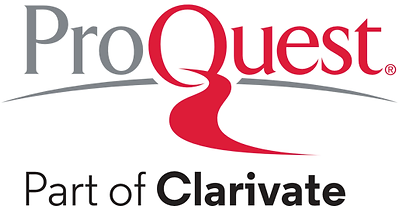Compact Semicircle CSRR- Loaded Antenna for Triband Applications
| Authors | A. Ambika1 , C. Tharini1, P. Chakraborty1 , S.S. Prabhu1, S. Priyadarsini2, Y.J.N. Ahamed3 |
| Affiliations |
1Department of Electronics and Communication Engineering, B.S. Abdur Rahman Crescent Institute of Science and Technology, Chennai 600 048, India 2Department of Computer Science and Engineering, PSR Engineering College, Sivakasi, India 3Department of Computer Science and Engineering, Sreenivasa Institute of Technology and Management Studies, Chittoor, India |
| Е-mail | ambika@crescent.education |
| Issue | Volume 17, Year 2025, Number 3 |
| Dates | Received 14 April 2025; revised manuscript received 24 June 2025; published online 27 June 2025 |
| Citation | A. Ambika, C. Tharini, et al., J. Nano- Electron. Phys. 17 No 3, 03009 (2025) |
| DOI | https://doi.org/10.21272/jnep.17(3).03009 |
| PACS Number(s) | 73.61.Jc, 71.20.Mq, 88.40.jj, 88.40hj |
| Keywords | Compact antenna, CSRR (Complementary Split-Ring Resonator), Tri-band, 5G (36) , Wi-Fi (2) , WLAN (5) , Miniaturization, Surface current distribution, Return loss, Radiation pattern, FR4 Substrate. . |
| Annotation |
This manuscript presents the analysis as well as the design of a compact size 3 semicircle CSRR (Complementary Split-Ring Resonator) loaded multiband antenna. The proposed antenna has 18 mm 20 mm dimensions and resonates at three frequency bands, namely 2.7 GHz, 3.75 GHz, and 6.5 GHz, making it suitable for Wi-Fi (802.11a), mid-band 5G band, and WLAN applications. The design includes a rectangular finite ground plane that is longer than λ/4, which enhances performance. The semicircle CSRR structure is etched from a semicircle monopole antenna, which provides additional resonant modes and also contributes to a reduction in the overall size of the antenna. The antenna has a height of 1.6 mm and is printed on an FR4 dielectric substrate with a dielectric constant of 4.4. The designed antenna has been both simulated and fabricated. The results show that all three frequency bands have achieved stable radiation patterns and acceptable return losses (<– 10 dB). The measured gain averages 2.028 dBi, indicating effective performance. The findings indicate that the antenna exhibits a bidirectional radiation pattern in the E-plane and a uniform distribution in the H-plane for lower frequency bands. This work highlights the antenna's compact design and its potential for efficient operation in modern wireless communication systems, providing a promising solution for future applications. |
|
List of References |
Other articles from this number
1) Electrical and Photoelectrical Properties of ZnFe2O4/InSe Heterojunctions [03001-1-03001-4]2) Design, Fabrication and Measurements of a Single-Layer X-Band Miniaturized Patch Antenna with Metasurface for 0.5U and 1U CubeSat Missions [03002-1-03002-10]
3) Microstructure and Morphological Properties of Granulated Mg3Sb2 Thermoelectric Material [03003-1-03003-7]
4) Green Synthesis of ZnO Nanoparticles Using Leaf Extracts, their Characterization and Antimicrobial Applications [03004-1-03004-10]
5) Design and Performance Improvement of a 3.5 GHz Elliptical Patch Antennafor 5G Sub-6 GHz/WiMAX Applications [03005-1-03005-6]
6) Ellipsometric and Maxwell-Garnett Model Studies of Silicon Nitride-based Bilayer Structures Elaborated by LPCVD [03006-1-03006-5]
7) Design, Fabrication and Measurements of an X-Band Cross-Patch Antenna with Metasurface for Advanced LEO CubeSat Missions [03007-1-03007-12]
8) Nanotechnology Driven Advanced Imaging and Classification of Brain Tumours [03008-1-03008-5]
9) Analysis of Performance Parameter of Hexagonal Coil Structure for Wireless Power Charging in Electric Vehicle [03010-1-03010-5]
10) Design and Analysis of a Notched Super Wide Band Antenna for Wireless Communication [03011-1-03011-5]
11) Reduction of Common-Mode Voltage Using Novel T-Type Multilevel Inverter for EV Application [03012-1-03012-5]
12) A Meta Surface Based Patch Antenna for Wireless Space Craft 5G Communication Systems [03013-1-03013-5]
13) Graphene Nanoribbon Based Asymmetric Tunnel FET for Fast Switching and Low Power Applications [03014-1-03014-5]
14) Massive MIMO Signal Detection Using Cascaded OQRD-PMD Method [03015-1-03015-6]
15) Design of a Compact Vivaldi Antenna for Wearable Tactical Applications [03016-1-03016-4]
16) Low-Profile Tapered Slot Antenna for Wearable Military Applications [03017-1-03017-4]
17) Optimized Dual Coupling PIFA for Low SAR Smartphone and Wearable Applications [03018-1-03018-4]
18) Design of Efficient Miniaturized Printed Monopole Antenna for Short-Range Wireless Applications [03019-1-03019-5]
19) Quantum Computing Approaches to Autonomous Mobile Robots and Multi-Machine Systems: A Perspective on Design Automation [03020-1-03020-6]
20) A Circular CPW Fed Patch Antenna with an L-Shape and Two Semi-Circular Shaped Slots for L, Ku and K-Bands [03021-1-03021-4]
21) DFT Performance Analysis of Graphene Nanoribbon FET with Gate Stack for Low Power Applications [03022-1-03022-5]
22) Forecasting Dielectric Behavior of Nano-Epoxy Materials through AI-based Electronic Properties [03023-1-03023-5]
23) Novel Model for Classifying the Toxicity of Metal Oxide Nanoparticles [03024-1-03024-6]
24) Dynamics and Optimization of Physical Processes in Information Systems Using Autonomous Mobile Robots and Multi-Agent Systems [03025-1-03025-6]
25) Automated Classification of Carbon Nanomaterial Structures based on Computer Vision Model [03026-1-03026-6]
26) Dynamic Optimization of Non-Equilibrium Processes in Nanostructures for High-Performance Applications [03027-1-03027-5]
27) Radiation-Induced Processes in Commercially Available Samples of Activated Carbon Under the Influence of Gamma- and Beta-Radioactivity [03028-1-03028-8]
28) Enhancing Concentrated Solar Photovoltaic (CSPV) Efficiency through Co-Doped ZnO Window Layers and Bi-As Infused GaSb Substrates [03029-1-03029-9]
29) Theoretical and Experimental Study of a Human Inner Ear Implant with an Ultrasonic Communication Line [03030-1-03030-7]
30) Thermoresistive Properties of Graphite Films [03031-1-03031-4]
31) Percolation Behavior of Electrical Conductivity of Polylactic Acid-Based Nanocomposites [03032-1-03032-6]
32) Structural and Optical Properties of Polystyrene CdS Nanocomposite Prepared by a Soft Chemistry Method [03033-1-03033-5]
33) Influence of Pulsed Current Parameters on the Structure Formation of Amorphous Co-W Alloys and their Thermal Stability [03034-1-03034-5]
34) First-Principles Calculation Investigations of Bandgap Bowing Parameters, Electronic and Optical Properties of Cd1 – xZnxTe, Cd1 – xZnxSe and Cd1 – xZnxS Semiconductors Alloys [03035-1-03035-7]
35) Reconfigurable Truncated E-Shape Electromagnetic Gap-Coupled Antenna with Air Gap and Switch Configurations for Wideband Wireless Applications [03036-1-03036-6]
36) Recovering Data for Free Induction Decay Signal for MRI Reconstruction with Interpolation [03037-1-03037-6]
37) Novel Hybrid Approaches for Occupancy Prediction Using Temperature, Light and CO2 Level Supporting Electrical Energy Management [03038-1-03038-6]






